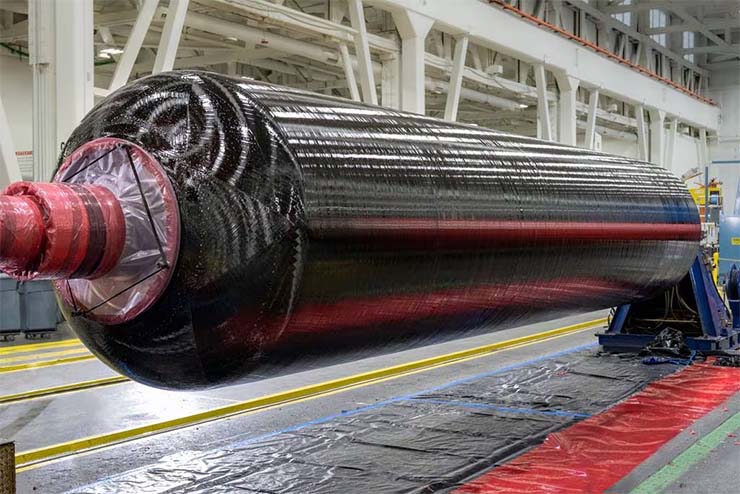
Washington: Northrop Grumman and its partner Raytheon have successfully manufactured the first set of solid rocket motor cases for the Missile Defence Agency’s Next-Generation Interceptor program.
Both teams competing to develop a new homeland missile defence interceptor for the Missile Defence Agency have entered the critical design phase with Northrop Grumman announcing it had passed its preliminary design review, according to a January 31 statement.
The teams competing to replace the Ground Based Midcourse Defence (GMD) interceptors with a Next-Generation Interceptor, or NGI, have been working on staggered schedules. The Lockheed Martin and Aerojet Rocketdyne team completed its PDR at the end of September 2023.
Northrop and its Raytheon partner passed through the same gauntlet on January 26, said Lisa Brown, who is in charge of the company’s NGI program on January 30. The teams are now one year ahead of the original contract date for PDR completion and Brown said its PDR wrapped up successfully one month ahead of an established accelerated plan.
Critical Design Review is now expected to take roughly a year. Brown said the team is expecting to reach that milestone in the spring of 2025 and is looking for ways to accelerate the schedule.
Because the program has completed milestones earlier than originally planned and due to an emphasis on digital design methods, both teams remain hopeful they can deliver an interceptor that could make it into underground silos by fiscal 2027, a year faster than the Missile Defence Agency is projecting.
There are 44 GBIs in the ground with the majority in silos at Fort Greely, Alaska, and the rest at Vandenberg Space Force Base, California. The current interceptors aren’t equipped to counter a missile that could contain multiple kill vehicles or decoys that make the defeat process more complicated, defence officials have said.
NGI is the result of the Pentagon cancelling in August 2019 its Redesigned Kill Vehicle program – which would have upgraded the GBI to be able to pursue more complex threats. That program struggled with insurmountable technical issues resulting in delayed schedules and cost increases. Raytheon, as a subcontractor for Boeing, was the developer for the RKV program.
Roughly eight months after the cancellation of the RKV program, MDA launched the new interceptor push. The companies are designing the new interceptor using digital methods meant to speed up the design process. As a result, Northrop’s engineers were able to build hardware earlier and begin testing sooner.
“In my 30 years at the company, I would say this is probably the most mature PDR level design I’ve ever seen. Frankly, a lot of the components are already at or past the CDR level,” Brown said.
As part of the PDR process, Northrop held a “science fair” where attendees could cycle through a large conference room and look at hardware and see actual models running or waveforms being generated, Brown described. This way “they could get a good understanding, hands-on, of a lot of the technology that we employ in the interceptor,” she said. The company showed its working NGI digital twin.
Northrop even used virtual reality to evaluate how a maintainer might access certain parts of the interceptor with a wrench to ensure good ergonomics and optimal access for repairs and maintenance, Brown added.
“We want to demonstrate to MDA that we are a low-risk approach,” Brown said.
Northrop is also in the midst of static fire testing its rocket motors. The stage three rocket motor arrived at MDA testing facilities in December and its stage one and two motors should complete static fire testing by the end of the first quarter this year, Brown said.















